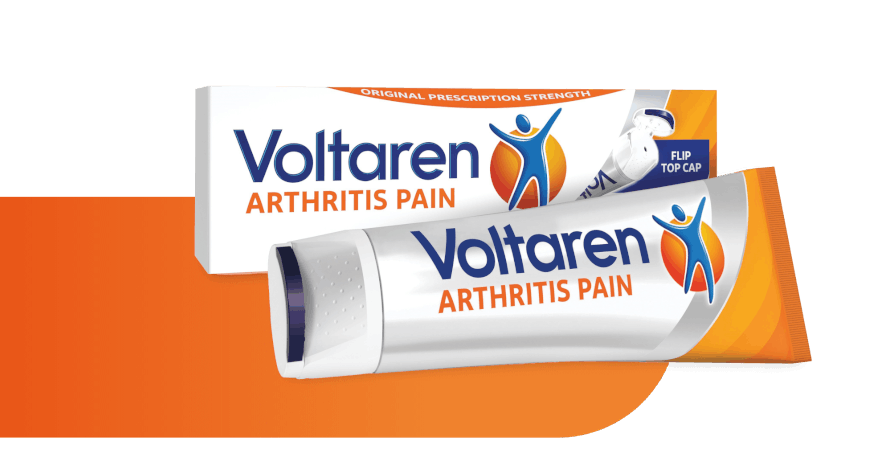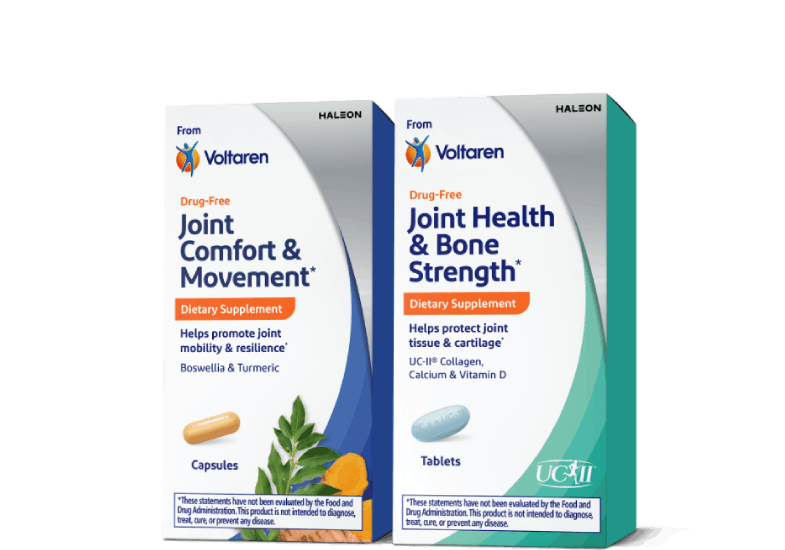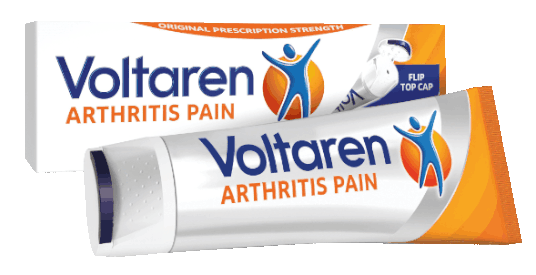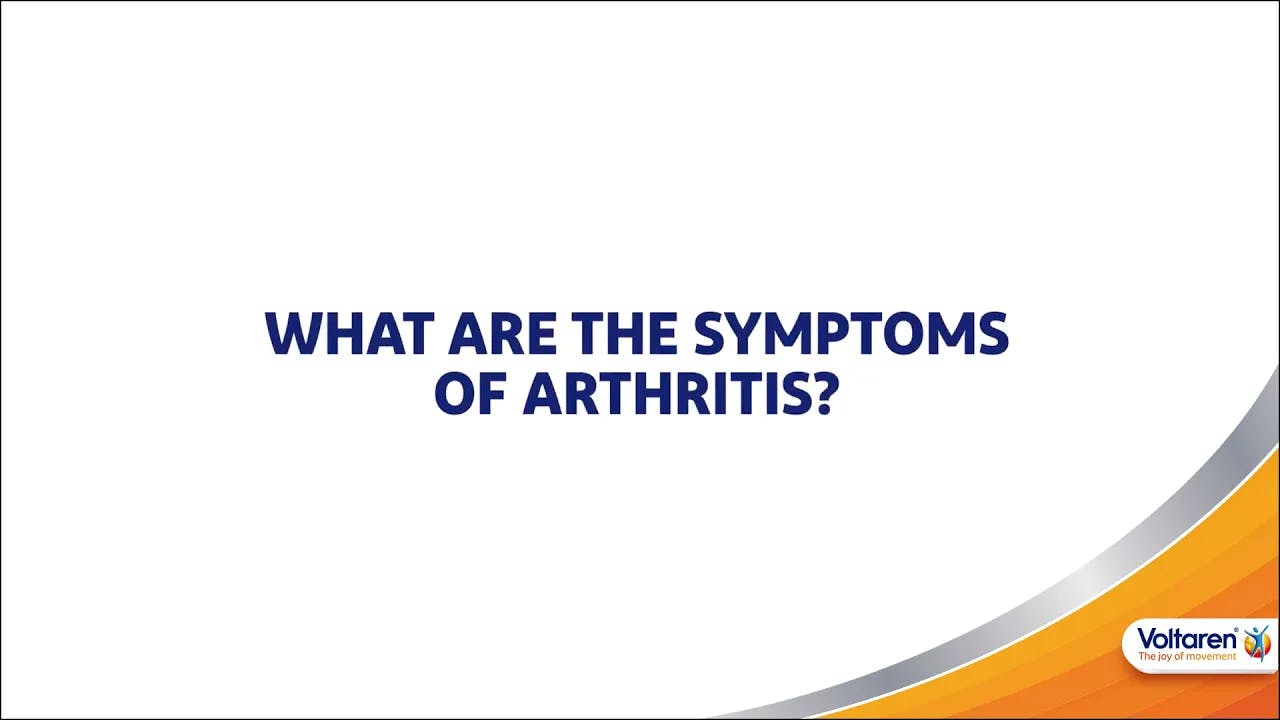What Are the Signs & Symptoms of Arthritis?
Arthritis symptoms take many different forms, and the pain you may experience is unique to you.
/symptoms-of-arthritis-hero.jpg?auto=format)
Voltaren has been studied to relieve the pain of osteoarthritis. There are many other types of arthritis that may be of interest to you, even though they’re not treated by Voltaren.
It can be tempting to brush off aches and pains as a normal part of life—just a part of getting older, right? But no matter your age, you shouldn’t ignore pain. Arthritis can strike at any stage in life. In fact, an estimated 58.5 million adults in the United States have some form of arthritis.1
According to the Centers for Disease Control and Prevention, there are more than 100 types of arthritis, all with different symptoms.1 However, some of the most common symptoms apply to several different types of arthritis, including two of the most common ones—osteoarthritis (OA) and rheumatoid arthritis (RA). Learn more about these symptoms so you can find a path to relief.
Common Arthritis Symptoms & Signs
Most types of arthritis cause pain and stiffness around joints, but other common symptoms may include:1,2,3,4
- Pain or aching at or around the joint that typically worsens as the day goes on.
- Stiffness that tends to be worse in the morning.
- Swelling and redness at or around the joint.
- Decreased range of motion in the affected area.2,3,4
The symptoms of arthritis not only vary from type to type—they can also vary from person to person.1 Two people with the same type of arthritis might feel different types of pain and may be affected in different parts of their bodies.
Rheumatoid arthritis and osteoarthritis symptoms can be easily confused. Remembering that RA is an autoimmune disease and OA is more of a “wear and tear” condition can help you differentiate between these two types:
- RA symptoms usually have a rapid onset due to inflammation, whereas OA symptoms are more likely to worsen over time as joints deteriorate.3,4
- With RA, symptoms tend to appear on both sides of the body, while OA symptoms may affect joints on one side of the body worse than the other.3,4
- While morning stiffness in RA patients will usually last longer than 30 minutes, OA patients typically experience morning stiffness for less than a half hour.3,4
Arthritis Risk factors
There are certain behaviors and characteristics that may increase an adult’s chance of developing arthritis in their lifetime.5 Individuals may be able to decrease their risk of getting arthritis or may lessen the symptoms they’re already experiencing by making certain lifestyle changes:1,4,5
- Genetics. Some types of arthritis can be genetic, so if your parents or siblings have the condition, you may be at a higher risk.
- Age. The older you get, the more risk you have of developing arthritis. On the flipside, younger people with joint pain, swelling, or stiffness might not even consider arthritis, but you can get arthritis during every stage of life.
- Gender. Women are more likely than men to develop certain types of arthritis, including OA and RA.
- Previous injury. If you have ever injured or reinjured a joint badly enough, you could develop OA in that area later in life.
- Obesity. Excess weight puts stress on joints and can put you at a higher risk of developing arthritis.
- Infection. Certain bacteria can affect your joints and may have the potential to cause types of arthritis.
- Smoking. Cigarette smoking is connected to an increased risk of developing RA and can make it harder to stay physically active, which may increase the severity of any existing symptoms.
Pain Isn’t Just Physical, It’s Emotional Too
While painful warning signals are sent through your body, the emotional impact shouldn’t be overlooked. Arthritis flare-ups can become so painful that they force you to cancel plans with loved ones. This stress may affect your social life and lower your overall quality of life, too. While these are understandable emotions, they’ve also been shown to make pain harder to handle.6 Once you identify these symptoms, you can find better ways to alleviate pain and get moving again.
In fact, make a point to treat your physical and emotional symptoms at the same time, so you can feel more like yourself. You may consider trying Voltaren Arthritis Pain Gel for your arthritis pain symptoms. Voltaren Gel is an over-the-counter, non-steroidal topical pain reliever, that has been clinically proven and trusted by doctors and patients in the U.S. for over 10 years.
Related Articles

What Are the Causes of Arthritis?
You may be experiencing arthritis for a number of reasons. No matter what may have caused your discomfort, there is a path to relief for you.
READ MORE

The Different Types of Arthritis
From osteoarthritis to rheumatoid arthritis and psoriatic arthritis—every type of arthritis can impact the quality of life in people of all ages.
READ MORE

Let’s Get You Moving
Join us to find out how Voltaren + music can give you arthritis pain relief, and receive unique arthritis tips designed to get you moving again.
Feel The Joy Of Movement
No matter the day, the hour, or what you’re doing, embrace the joy of movement with the help of specialized products from Voltaren: powerful gel for arthritis pain † or drug-free, dietary supplements for healthy joints.*

For Arthritis Pain Relief

For Healthy Joints*
†Use as directed. Voltaren is approved for treatment of arthritis pain.
Dietary supplements from Voltaren are not intended to treat arthritis pain.
*These statements have not been evaluated by the Food and Drug Administration. These products are not intended to diagnose, treat, cure or prevent any disease.




